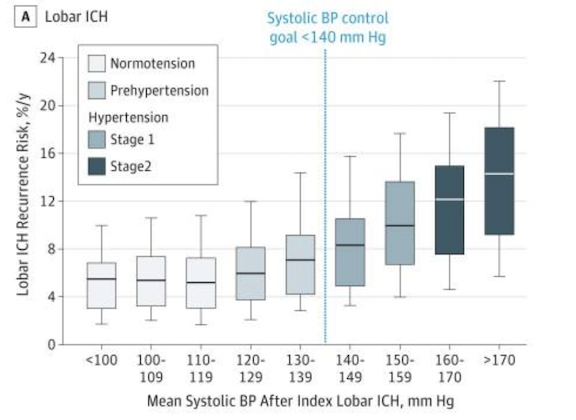written by Dr. Roger Weissinger-Baylon
March 21, 2022
Welcome to our Cerebral Amyloid Angiopathy site: What you need to know!
What you need to know!
Welcome to our new site dedicated to learning about and dealing with Cerebral Amyloid Angiopathy (CAA). This site is designed to help you learn more about CAA and to better deal with it, whether you have been diagnosed yourself with the condition, or whether you are a caregiver or friend.
If you have been diagnosed with CAA, it may be because you suffered a bleeding stroke and a brain MRI subsequently showed a pattern of microbleeds characteristic of CAA. At some point, the doctor or neurologist will explain that amyloid proteins have built up in the walls of blood vessels in your brain, and weakened the walls, leading to a stroke. You will probably be told that the causes of CAA are not well-understood and there is no known treatment that has proven to be successful.
Although heredity is a possible cause of CAA, such cases are fairly rare. The principal risk factor is age, with CAA being uncommon before the age of 60 or 65. Moreover, there is not even a definitive test for CAA other than a brain biopsy, which would rarely be recommended. Instead of a definitive diagnosis, you may be told that you have “possible CAA” or “probable” CAA. This diagnosis would likely be based on the Boston Criteria or Modified Boston criteria, which take account of the size and location of your brain bleed(s) and micro-bleeds as shown on an MRI. Since so little is known about the causes of CAA, the guidance you receive from your doctor may be limited, but it may possibly include:
- Take your blood pressure regularly and make sure that the systolic pressure is under 120. (Systolic pressure is the top number on your blood pressure result, diastolic is the bottom number). You will probably be given medication to take if your blood pressure goes over 120.
- Adopt a so-called Mediterranean diet (a rather general concept) or another type of heart-healthy diet.
You may receive an estimate of your chance of a recurrent stroke, which may be high–as much as 10% a year in one case that we are familiar with. However, there are many things that you can do that may help.
About this site:
Important notice: The team developing this site has hundreds of hours of personal experience in learning about and in dealing with CAA, and we have graduate degrees from MIT, Stanford, and Oxford. We want to share what we have learned and are still learning with others–and we eventually hope to learn even more from you and other visitors to this site. However, we do not have medical degrees or backgrounds, so this site should only be used as a guide or reference tool.
Things you can do:
Keep your (systolic) blood pressure under 120. As you can see from the graph below, the risk of a recurrent stroke stays almost as low as possible if the systolic blood pressure is below 120–or even 130.
https://www.ncbi.nlm.nih.gov/pmc/articles/PMC4737594/

Get better sleep. Amyloids are cleared out of the brain during the deep sleep phase (phase three) that comes just before the REM (rapid eye movement) phase. Therefore, getting an adequate amount of deep, restful sleep may be important in reducing the risk of stroke recurrence. Since the length of deep sleep tends to decline significantly with age, getting adequate deep sleep may require special efforts (avoid caffeine in the late afternoon or evening, avoid stressful activities close to bedtime, sleep in a dark room). Since amyloids seem to be cleared during hard-to-achieve deep sleep, it might be useful to have your sleep monitored by a professional sleep lab, or you could investigate sleep monitoring devises such as the OURA ring or many others. (Some find that the results are not always accurate.)
https://www.nih.gov/news-events/nih-research-matters/how-sleep-clears-brain
Reduce your stress. There may be evidence that heavy, prolonged stress can raise your blood pressure. This is important to consider since management of your blood pressure may be the single most important thing you can do to reduce the risk of another stroke. To control your stress, meditation may be very helpful, and–depending on your interests or resources–perhaps you could consider acupressure, biofeedback, or music therapy.
Use extra virgin olive oil with oliocanthal. Some “extra virgin cold press” olive oils contain oliocanthal, which appears to be helpful in reducing amyloids. Few brands of olive oil list the oliocanthal content on their labels, but you can recognize its presence by a slight or strong stinging aftertaste in the back of your throat. Auburn University’s Pharmacy School is currently conducting a study. (And studies on mice seem to demonstrate a strong positive effect.)
https://www.sciencedirect.com/science/article/abs/pii/S0955286315001898
Use tumeric (curcumin) as a spice. Tumeric is well known for its anti-inflammatory benefits and appears to have considerable potential for treating caa. In order to have a noticeable benefit, however, Tumeric might need to be incorporated into meals almost on a daily basis.
https://www.researchgate.net/publication/281147029_Chronic_administration_of_Curcuma_longa_extract_improves_spatial_memory-related_learning_ability_in_aged_and_Alzheimer’s_disease_Model_rats
Eat less saturated fat. While there may be no obvious direct link between consumption of saturated fat and CAA, there does seem to be good evidence that it significantly increases the risk of cognitive impairment and dementia which are among the possible outcomes of CAA.
https://pubmed.ncbi.nlm.nih.gov/29701155/
Pay attention to copper. There is evidence that copper (which may accumulate overnight in water in copper pipes) may increase the severity of Alzheimer’s disease. Since copper also has important benefits, it is hard to make any firm recommendation.
https://www.ncbi.nlm.nih.gov/labs/pmc/articles/PMC3767519/
Some things that are worth considering:
Exercise. Although exercise does not directly protect against CAA, aerobic exercise, in particular, may be effective in lowering blood pressure, which is perhaps the single most important thing you can do to avoid the recurrence of a stroke. Exercise may also be important in order to regain weight and lost muscle mass that has been lost during a stroke.
https://pubmed.ncbi.nlm.nih.gov/11926784/
In addition, exercise seems to have anti-inflammatory effects in the brain while also having motor, temperament, and sociability benefits.
https://jneuroinflammation.biomedcentral.com/track/pdf/10.1186/s12974-019-1534-0.pdf
Sleeping on your side. While the importance of sleep is strongly emphasized above, it may also be worth considering that sleeping on your side may make it easier for waste products (presumably including amyloids) to be removed from your brain.
https://www.sciencedaily.com/releases/2015/08/150804203440.htm
Some things to avoid:
Salt. Sadly, it needs to be limited in order to keep blood pressure as low as possible.
Aspirin, fish oil, and blood thinner medicine. Aspirin and fish oil must absolutely be avoided since they are blood thinners that will increase the risk of stroke.
Alcohol. While moderate alcohol consumption may involve little risk, heavy use may significantly increase the risk of cognitive impairment or dementia.
Foie gras. Although the food you eat is unlikely to have any effect on the level of amyloids in your brain, the amyloid content of fois gras can be so exceptionally high that it should be avoided.
Aducanumab. There is no evidence that the monoclonal antibody Aducanumab, which is a new and very costly treatment for Alzheimer’s Disease is useful in treating CAA.
https://www.massgeneral.org/news/press-release/Doctors-warn-against-off-label-use-of-new-alzheimers-drug-for-cerebral-amyloid-angiopathy
If you want to know more: some possibly useful references (some of the references are quite technical):
Many of the citations below refer to experiments that, while promising, are conducted on mice rather than on humans, or research that is only in the clinical trial stage, or for which clinical trials have not yet begun.
Cerebral Amyloid Angiopathy: Overview. This article gives a very deep, professional discussion of almost every aspect of CAA, early symptoms, the forms in which it appears, and approaches to diagnosis (including MRI interpretations) and treatment. After each section, click “next” to proceed.
https://emedicine.medscape.com/article/1162720-overview
Cerebral Amyloid Angiopathy: A Different Kind of Stroke. This is a case study of an 81-year-old man with CAA, with a comprehensive analysis of his diagnosis and treatment.
https://www.nursingcenter.com/ce_articleprint?an=01376517-201808000-00005
Cerebral Amyloid Angiopathy: A Critical Review
https://www.ahajournals.org/doi/pdf/10.1161/01.str.18.2.311
Oleocanthal-Rich Extra-Virgin Olive Oil Restores the Blood-Brain Barrier Function through NLRP3 Inflammasome Inhibition Simultaneously with Autophagy Induction in TgSwDI Mice.
https://pubmed.ncbi.nlm.nih.gov/31244050/
“Current Management and Therapeutic Strategies for Cerebral Amyloid Angiopathy” This paper discuss the potential of CAA-associated molecules that have been identified by proteomic analyses (apolipoprotein E, clusterin, SRPX1 (sushi repeat-containing protein X-linked 1), TIMP3 (tissue inhibitor of metalloproteinases 3), and HTRA1 (HtrA serine peptidase 1)).
https://pubmed.ncbi.nlm.nih.gov/33918041/
APOE immunotherapy reduces cerebral amyloid angiopathy and amyloid plaques while improving cerebrovascular function
“HAE-4 not only reduced amyloid but also dampened reactive microglial, astrocytic, and proinflammatory-associated genes in the cortex.”
https://pubmed.ncbi.nlm.nih.gov/33597265/#affiliation-1
STAT3 inhibitor mitigates cerebral amyloid angiopathy and parenchymal amyloid plaques while improving cognitive functions and brain networks.
https://actaneurocomms.biomedcentral.com/articles/10.1186/s40478-021-01293-5
Relationship between uric acid and cerebral amyloid angiopathy. According to this article, “uric acid in the blood protects the blood vessels from CAA damage to the blood vessel wall, and reduces the occurrence of cerebral hemorrhage.”
https://pubmed.ncbi.nlm.nih.gov/34913811/
Research on ALN-APP. Alnylam Pharmaceuticals has applied to begin clinical trials investigating an “RNAi therapeutic targeting amyloid precursor protein for the treatment of Alzheimer’s disease and cerebral amyloid angiopathy.”
https://www.nasdaq.com/articles/alnylam-pharma-files-clinical-trial-authorization-application-for-aln-app-in-the-uk
Research on NOD2. NOD2 is a “receptor expressed by myeloid cells (including monocytes and microglia activation in mouse models of Alzheimer’s disease. It has a strong effect on the clearance of circulating beta-amyloid via blood vessels of the brain.” The focus is on “removal of beta-amyloid from the perivascular space, by modulating peripheral innate immunity, rather than targeting CNS plaque formation and clearance.”
ttps://www.biospace.com/article/releases/amorchem-invests-in-a-potential-treatment-for-cerebral-amyloid-angiopathy-and-alzheimer-s-disease/?fbclid=IwAR14AVX0HDLV8bt81mub1PDoAIB_Y_Vz43nLD1rXLKsYxBEC_F3gMpaZSCs
Research of EPPS. According to researchers at the Korea Institute of Science and Technology, a chemical known as 4-(2-hydroxyethyl)-1-piperazinepropanesulphonic acid (or EPPS) appears to break down amyloid plaques in the brain.
https://sciencebeta.com/epps-clears-alzheimers-protein/
SchragLab @LabSchrag. “Dramatic picture of an artery that ruptured due to caa.” (It is best to see this image in 3D: go to SchragLab @LabSchrag and scroll down to 6 Dec 2021.)

©Center for Strategic Decision Research 2022

One response to “Welcome to our Cerebral Amyloid Angiopathy site: What you need to know!”
Welcome to our website. We hope that it will be a useful resource in dealing with CAA. Your comments are very welcome and will help us make this site more useful to you and others.